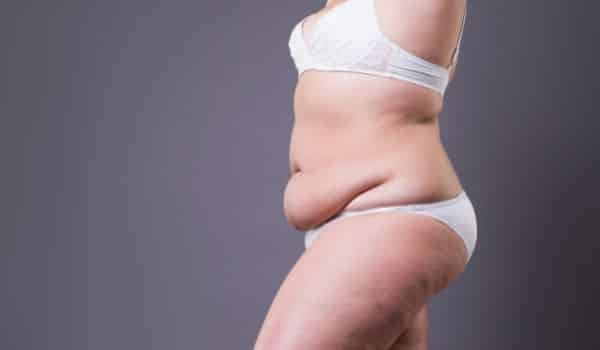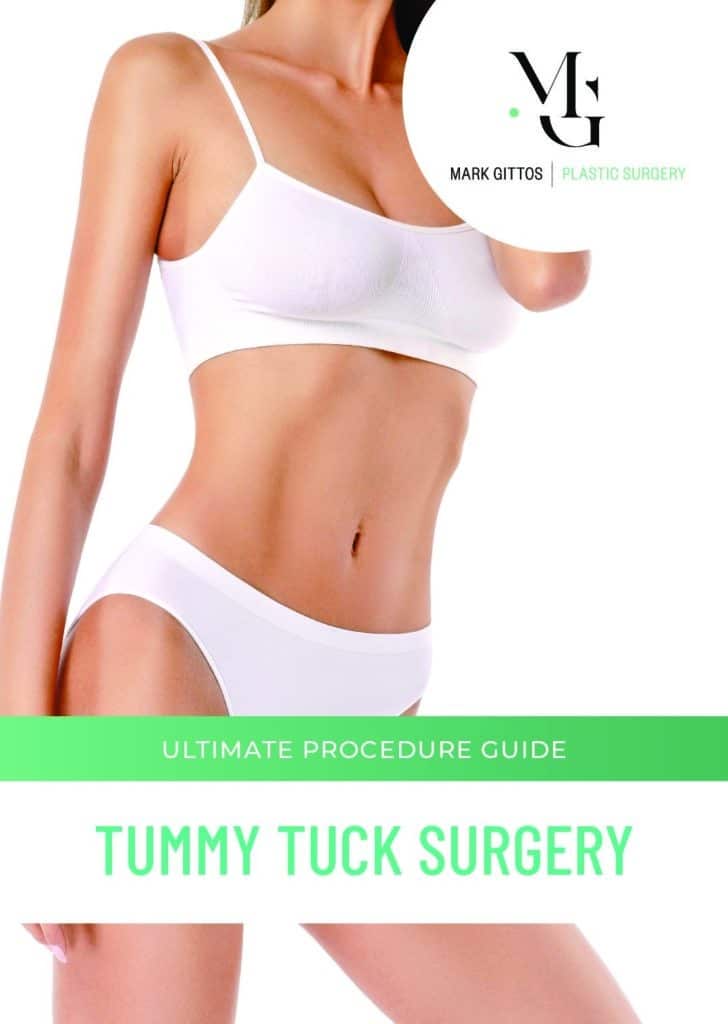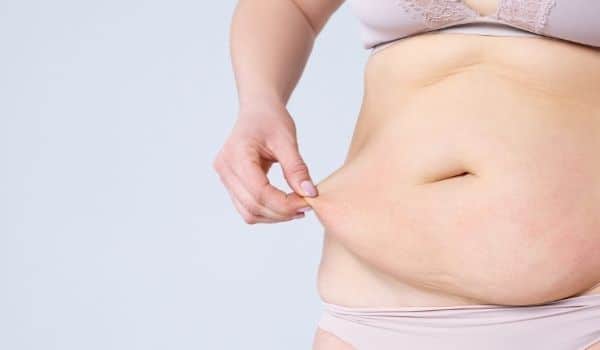Get rid of the belly apron after Extreme Weight Loss with Apronectomy surgery by Dr Gittos in Auckland
If you are interested in getting your abdomen back in shape but you are confronted with an excess of skin, you might be a good candidate for the apronectomy surgery. The procedure targets just the lower abdomen and offers ample opportunity for improving your aesthetic appearance.
Apronectomy is NOT the same as an abdominoplasty or a tummy tuck but a completely different procedure that tackles the skin and fat on the lower abdomen.
Dr Mark Gittos is a leading Auckland plastic surgeon who is an expert in Body contouring surgery.
What Is Apronectomy?

Extreme weight loss can lead to a hanging belly and excess abdominal skin. But, no matter the type of diet or physical activity you try, you can’t get the desired body shape. That’s because this hanging skin requires more targeted treatment than exercise alone.
Apronectomy is a procedure that can remove the overhanging skin and fat from the lower abdomen. It doesn’t work with the entire abdomen, just the lower area of the stomach. The goal is to create a flatter-looking surface and a defined stomach. Patients opt for an apronectomy when they have an overhanging abdominal apron.
Quick Facts about Apronectomy
- Surgery duration: 1.5 to 2 hours
- Anaesthesia: General
- Scarring: horizontal ellipse line
- Results duration: Considered Permanent if a healthy weight is maintained
How is the Apronectomy performed?
Apronectomy is a simple surgical removal of excess tissue. Dr Gittos cuts a horizontal ellipse line just below the belly button and over the pelvis. This will leave the body with a scar across the lower area of the abdomen, quite like that of a caesarean section. However, the apronectomy scar could be longer.
Keep in mind that this procedure won’t target the excess tissue in the upper or middle abdomen nor fix split tummy muscles. Patients receive a general anaesthetic. The treatment could take anywhere from 1.5 to 2 hours, depending on how much excess skin is there to remove.
Post-treatment, patients could stay in the hospital for 1 to 2 nights. Sometimes drains (tubes) are used to avoid fluid build-up at the level of the surgical site. These drains can stay for 1 to 2 nights after which they are taken out. The primary reason people book this procedure is to alleviate the symptoms caused by excess skin. These include irritation, blisters, and rashes.
Plus, when the extra tissue is taken out, it’s easier to boost mobility and have an active lifestyle. Although many patients get an apronectomy to improve the physical appeal of their abdomen, a lot more are getting it to increase their quality of life and overall well-being.
Download Dr Mark Gittos’ Guide to Tummy Tuck Surgery – Abdominoplasty

What’s the Difference between Apronectomy and Abdominoplasty?
The abdomen is the area often affected by different changes such as pregnancy, weight gain and weight loss. When someone loses a lot of weight, an apron or pannus can form. So, the abdominal tissue ends up hanging over and covering the pubic area. Two primary procedures can address the issue – an apronectomy or a an abdominoplasty.
Some people ask “is abdominoplasty a major surgery”? Apronectomy is not as extensive as a tummy tuck (abdominoplasty), and it may come with fewer risks. These two are completely different procedures that use various techniques to tackle the extra fat. Apronectomy is only capable of removing the hanging apron.
Whereas abdominoplasty (tummy tuck) addresses the complete abdomen. It removes the excess, loose fat and skin, and can also tighten weak abdominal muscles. Abdominoplasty strengthens the abdominal wall muscles and is a more popular choice for taking care of the extra-abdominal tissue.
Why Would You Choose Apronectomy over a Tummy Tuck?
If you want to avoid major surgery and some of the potential risks that come with a tummy tuck, then an apronectomy could help. For those who are bothered by issues from the overhanging apron, like tissue swelling, pain, and inflammation, then an apronectomy is a viable choice.
To use this procedure to its full potential, it is better to be as close to your ideal weight or BMI as possible. PLEASE NOTE – Dr Gittos will only operate on Non Smokers with a BMI of less than 28.
Who Is a Good Candidate for Apronectomy?

Patients are expected to comply with a couple of criteria before they can book apronectomy treatment. The surgery should offer them a clinical benefit that would be useful in the long run. Only Dr Gittos can decide whether this type of procedure will work for you.
To qualify, your BMI should be equal to or less to 30, and you’ve recently undergone a drastic weight loss journey, which left you with excess and hanging skin.
The goal is to work with that extra fat so that you can get the desired outcome. Most of those who get an apronectomy are older patients. But, it’s not uncommon for younger individuals to seek treatment. Nevertheless, patients are expected to be over 18 to qualify for surgery.
Another thing to keep in mind is that it is recommended to have maintained a stable weight for at least 12 months before undergoing the procedure. The main reason for that is that if you want to get more permanent results from this surgery, you would need to maintain a healthy weight post-procedure.
Patients are also expected to quit smoking before surgery. Smoking increases the risk of issues during and after the procedure. If you quit 4 to 6 weeks before your apronectomy and you stay smoke-free 4 weeks after it, you can curb the wound complication rate by 50%. Plus, you will give your lungs that much-needed break.
Apronectomy Recovery Process
The Apronectomy recovery time can vary from person to person. Generally speaking, the recovery after an apronectomy is faster than after a tummy tuck. In a couple of weeks, you should be back to your regular activities. After the surgery, you may stay in the hospital for a day or two. During this time, Dr Gittos will offer you practical advice on how to take care of your wound.
You will also be encouraged to shower and go for a gentle walk. Although you will go home after getting discharged, you will need to return to the clinic to get the wound and dressings checked. The first week, it’s best to stay at home.
While the body still recovers, you will be asked to refrain from doing any demanding physical activity or heavy lifting. That’s because they can put a lot of strain on your abdominal muscles. You will also wear an abdominal binder, which is a unique medical garment that’s meant to promote the natural rejuvenation process.
The second week, you can start venturing outside for some short walks. Your doctor will suggest you take some time off work to give the system enough time to recuperate. Fitness enthusiasts should also refrain from doing any sport that may interfere with the healing process.
Make sure to drink plenty of water and remain hydrated. Hydration plays a key role in wound healing. What you want to do is keep drinking water so the cells will function properly.
Get regular medical check-ups to ensure the body heals at a good pace. If there is any change in the way it heals, Dr Gittos might suggest a proper treatment that can set you on the right track.
How Much Does an Apronectomy Cost?
To get an exact apronectomy price estimate, contact Dr Gittos team.
Check out Dr Gittos’s pricing page here and keep in mind that there are financing options available to help you pay for your apronectomy surgery.
Apronectomy Risks and Possible Complications
Like any surgical treatment, there is a possibility for complications. With a treatment like this, some patients may experience risks associated with anaesthesia, wound infection, and bleeding. These problems can be easily managed with professional help.
Other risks after treatment could include:
- Nerve damage
- Fluid build-up under the wound
- Scarring
- Temporary numbness in the surgical area
- Prolonged swelling
Discuss the complications and possible risks ahead of the procedure. It’s important to be well prepared so that you’ll know exactly what to expect. To reduce the risk, be sure to follow Dr Gittos’s recommendations before the procedure.
Quit smoking and work on your diet and lifestyle choices. It’s critical to have a properly working immune system so that the body can stay in good shape. Be open about any health conditions you might be having. Find out more details about risks of plastic surgery from Dr Gittos’s page.

Apronectomy FAQs
Interested in finding out more about apronectomy? Here are some frequently asked questions:
What is a hanging stomach called?
- The stomach that overhangs over the pelvis that looks like an apron of fat is also known as abdominal panniculus or pannus. It hangs down from the abdomen and can be uncomfortable to deal with. The excess fat and skin can also cover other areas of the body. Mainly the knees, hips, and anterior thighs. But, apronectomy can only treat the lower abdominal area.
Is an Apronectomy permanent?
- The results of the treatment will last only if you can maintain a stable weight after the procedure. But, if you don’t watch your weight, exercise, or take care of your body, it can be difficult to keep the results in the long run. Talk to a medical expert or a dietitian to start a healthy routine.
Is apronectomy better than abdominoplasty?
- Both procedures have something to offer. Abdominoplasty is recommended for people who want to contour the entire abdomen. Whereas apronectomy is a more targeted approach that focuses solely on the hanging skin on the lower abdomen. Apronectomy is less invasive and may have a faster recovery time.
Does Apronectomy hurt?
- The procedure itself is done under general anaesthesia, which means patients can’t feel pain and remain unconscious during the surgery. After the treatment, it is normal to feel some level of pain. That’s because the skin tissue is recovering. But, this pain is easily managed with adequate prescription medicine. Talk to your doctor about which pain meds you could use.
What type of anaesthetic is used for apronectomy?
- In most cases, a general anaesthetic is preferred. The type of anaesthesia will be discussed with Dr Gittos during the initial consultation.
How long does an apronectomy take?
- Expect the surgery to last anywhere from 1.5 to 2 hours. This isn’t a lengthy procedure. But there is still a lot of work to be done. So, don’t be surprised if it lasts slightly longer than that.
Further Reading and Medical References about Apronectomy
- https://www.ncbi.nlm.nih.gov/pmc/articles/PMC6140063/
- https://www.ncbi.nlm.nih.gov/books/NBK431058/
- https://journals.lww.com/aswcjournal/Citation/2006/03000/Hydration__Does_It_Play_a_Role_in_Wound_Healing_.7.aspx#:~:text=Water%20is%20a%20major%20component,system%20and%20interrupts%20cell%20function.
- https://www.ncbi.nlm.nih.gov/books/NBK499822/
- https://www.medicarefaq.com/faqs/medicare-coverage-for-plastic-surgery/
About Dr Mark Gittos FRACS (Plast) – New Zealand Plastic Surgeon
Practice locations in Herne Bay Auckland, Northland and Bay of Plenty – Kerikeri, Whangarei, New Plymouth & Tauranga
Dr Mark Gittos is a leading Specialist Plastic Surgeon and operates a practice in Herne Bay, Auckland and in the UK. The practice focuses on both surgical and non-surgical procedures, each designed to help restore, improve or change a physical characteristic or problem. The first step in every case is to talk through your personal requirements and explore all the options, before deciding on the most effective solution.
Dr Mark Gittos offers high quality, natural-looking cosmetic surgery results and is highly experienced in Breast, Body and Face Surgery having performed over 4000 Surgeries in the last 26 years. With worldwide expertise Dr Gittos is an expert in breast, face and body surgery for men & women.
Naturally, before any treatment is begun, we will explain clearly the advantages and risk factors; so that you have the information you need to make an informed decision that is best for you. Visit the practice to find out more.

NEXT STEPS
Do your Research
- Read the Website and Blogs relevant to your procedure
- Browse our Frequently Asked Questions including how to choose a Surgeon for your procedure
- Download and read the FREE Guides to Surgery
What to Bring to your Plastic Surgeon Consultation
- Bring a friend or relative to help discuss the information and your choices
- Take lots of notes and read the documents provided thoroughly
- Dress in simple clothes as you may need to undress for examination
- Bring your medical referral and any relevant medical documents or test results
Book your Initial Surgery Consultation
- A Referral from your GP or specialist is helpful but NOT essential – you can have a consultation without a GP Referral
- Email us or Call on 09 529 5352 to arrange your surgeon consultation appointment.
- Book a consultation with Dr Gittos by paying the Consultation Fee – $325 incl GST
Please contact us to arrange to book a consultation with our Specialist Plastic Surgeon or to speak with our Patient Care Advisor.
Send an enquiry form today or phone 09 529 5352 during Clinic Hours
